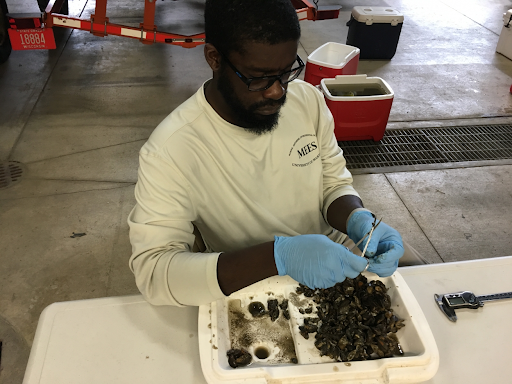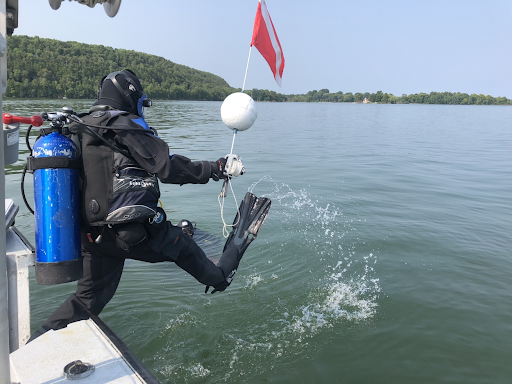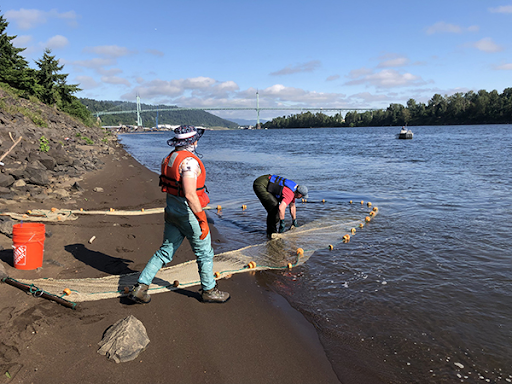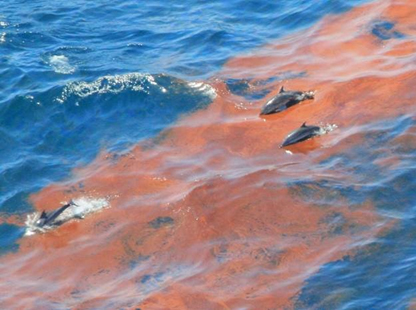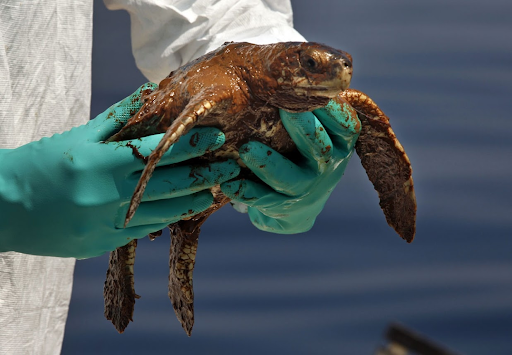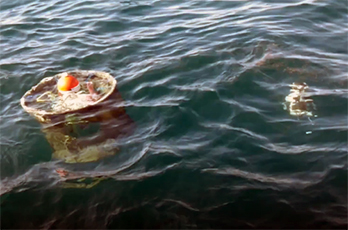This blog was originally published on Oct. 20, 2021.
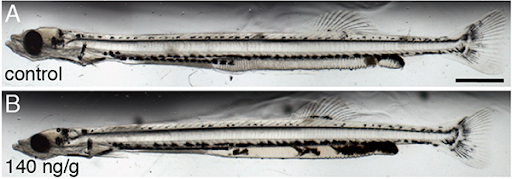
To answer the question “How does pollution impact the ocean and what can we do about it?” NOAA experts often need to conduct research that advances our knowledge of marine pollution science.
Each year NOAA Office of Response and Restoration (OR&R) scientists collaborate with leading experts on topics like marine debris, environmental economics, endangered species, environmental chemistry, and many other subjects that intersect with pollution science. All of these studies have different goals, but all advance OR&R’s ability to respond to, assess the impacts of, and restore the environment after oil spills and hazardous waste and marine debris pollution.
This blog highlights 12 scientific articles about research advancing pollution response and assessment published in Fiscal Year 2021.
Discovering How Microplastics Impact Freshwater Mussels
“Microplastics in Invasive Freshwater Mussels (Dreissena sp.): Spatiotemporal Variation and Occurrence With Chemical Contaminants” measured microplastics and chemical contaminants in the tissues of mussels found in the Milwaukee Harbor in Wisconsin.
The study harvested mussels from sites where wastewater effluent and urban rivers flow into Lake Michigan. The researchers found that there were more microplastics in the largest mussels at sites near wastewater facilities. However, they did not find this trend in smaller mussels or a link between chemical contaminants and microplastics in mussels. This research helps inform our understanding of how microplastics impact bottom-dwelling mussels in urban Great Lake ecosystems.
Studying Salmon Growth at Portland Harbor Superfund Site
“Decreased Growth Rate Associated with Tissue Contaminants in Juvenile Chinook Salmon Out-Migrating through an Industrial Waterway” was conducted as part of NOAA’s work on the Portland Harbor Superfund site in Oregon, where juvenile Chinook salmon migrate on-route from the rivers of their birth to the ocean.
Researchers found reduced growth rates associated with contaminant levels in fish tissues, especially polycyclic aromatic hydrocarbons (PAHs) and polychlorinated biphenyls (PCBs). The results of this research indicate that contamination in Portland Harbor impacts salmon growth, especially during the salmon's first year of life. This is important because salmon grow rapidly in the first year of life and growth is an indicator of its odds of survival and ability to eventually return to the Willamette River tributaries where they spawn.
Preparing for Arctic Oil Spill Response

“Responder Needs Addressed by Arctic Maritime Oil Spill Modeling” is part of a larger project funded by the Homeland Security’s Arctic Domain Awareness Center and facilitated by the University of New Hampshire’s Coastal Response Research Center.
A goal of the project is to prioritize new investments in model and tool development to improve response effectiveness in the Arctic. This journal article outlines responder needs during Arctic maritime spill response and provides solutions to communicating sources of uncertainty in model outputs using a Confidence Estimates of Oil Model Inputs and Outputs (CEOMIO) table. Having these resources available before an oil spill happens will be critical if a spill occurs in the remote and harsh Arctic Ocean.
Investigating How Oil Toxicity Impacts Vertebrates
“A review of the toxicology of oil in vertebrates: what we have learned following the Deepwater Horizon oil spill” examines eight years of research conducted during and after the Deepwater Horizon oil spill and summarizes findings about the toxic impacts of oil on marine mammals, turtles, fish, and birds, as well as the results of observational studies on humans.
All of the species studied showed some consistent types of toxic responses when exposed to oil. Species suffered impaired stress responses and adrenal gland function, heart problems and abnormal heart development, impaired immune systems, damaged blood cells, problems moving, and cellular damage. This analysis will help responders better plan for, respond to, and hold polluters accountable for future oil spills.
In-Situ Bioassays: Assessing Oil Spill Toxicity to Aquatic Life in the Field
“Tracking and Assessing Oil Spill Toxicity to Aquatic Organisms: A Novel Approach” chronicles testing of a new tool called a Drifting Exposure and Effects Assessment Ring (DEEAR) developed to drift for 8-48 hours and perform bioassays within oil spills—tests typically performed in the lab.
Small shrimp, larval fish, and fish eggs are contained within glass tubes that water, and oil from the environment are pumped through. Other sensors collect data on contaminant concentrations, water quality, and the DEEAR’s trajectory as it drifts. After the DEEAR is retrieved those animals can be taken to the lab to study how the oil impacts their health over time. Not only does this research allow for more environmentally accurate bioassay studies, future advancements could allow scientists to monitor DEEAR data in real-time.
Improving Salt Marsh Recovery After an Oil Spill by Planting

“Planting after shoreline cleanup treatment improves salt marsh vegetation recovery following the Deepwater Horizon oil spill” examined recovery of salt marshes from oiling.
The Deepwater Horizon oil spill in 2010 resulted in areas of heavily impacted salt marshes. Researchers found that shoreline cleanup, coupled with replanting, reduced the oiling extent and enhanced marsh vegetation recovery as compared to sites with no shoreline treatment and sites with mechanical cleanup only. The authors recommended that vegetation replanting should be considered for implementation after intensive oil spill cleanup activities, particularly in areas where the majority of the vegetation has died back or otherwise been removed, erosion risk is high, and recovery may be delayed.
Mitigating Waste During Scientific Conferences
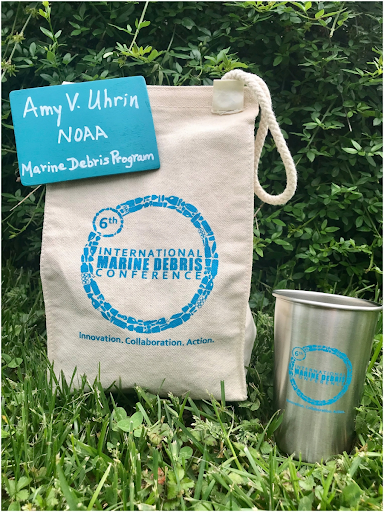 “Walking the talk: The responsibility of the scientific community for mitigating conference-generated waste” highlights waste reduction efforts that took place at the Sixth International Marine Debris Conference in 2018.
“Walking the talk: The responsibility of the scientific community for mitigating conference-generated waste” highlights waste reduction efforts that took place at the Sixth International Marine Debris Conference in 2018.
Scientific conferences generate opportunities for waste through food and beverage services, giveaways, marketing and registration materials, poster and trade exhibits, attendee travel, lodging services, and local transportation. Zero waste measures instituted at the Sixth International Marine Debris Conference resulted in the avoidance of 76,300 single-use items. This publication calls on scientists to “walk the talk” and plan events that reduce waste.
Cleaning Field Equipment for Sound Science
 “Assessment of Hydrocarbon Carryover Potential for Six Field Cleaning Protocols” is a NOAA Technical Memo establishing guidelines for cleaning equipment to reduce cross-contamination of oil samples.
“Assessment of Hydrocarbon Carryover Potential for Six Field Cleaning Protocols” is a NOAA Technical Memo establishing guidelines for cleaning equipment to reduce cross-contamination of oil samples.
After the 2010 Deepwater Horizon oil spill in the Gulf of Mexico, field teams collected tens of thousands of samples to analyze oil as part of a natural resource damage assessment. Some published guidelines recommend using organic solvents in the cleaning routine, but carrying these liquids in the field raises health, safety, and environmental issues. In this publication, researchers analyzed several cleaning techniques to compare their efficacy and recommend best-practices for cleaning field equipment during oil spill response.
Reviewing How Pollution Impacts Marine Life
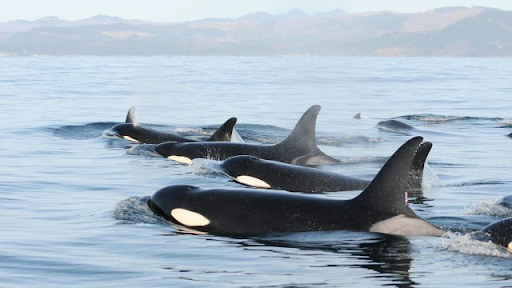
“Effects of pollution on marine organisms” is a literature review of studies examining the wide range of impacts human-caused pollution inflicts on marine life.
This review, the latest of dozens of past annual reviews conducted by Office of Response and Restoration, comments on 212 selected articles on subjects ranging from laboratory toxicity testing to field surveys, as well as observations on polluting activities around the world. Specific topics include effects of physical disturbances, oil spills, wastewater discharges, marine debris, artificial night lighting, noise, dredging and dumping, and field survey methods. This literature review helps to synthesize best-available information about pollution and ocean life.
Developing a Model for PCB Pollution and Bottom-Dwellers
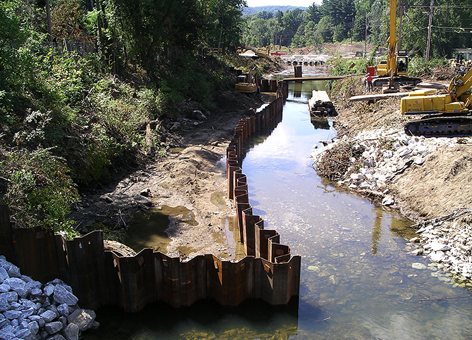
“Acute PCB Benthic Invertebrate Toxicity Testing to Support the 2017 Chronic Dose-Response Sediment Injury Model” generates a dose-response model to help scientists understand how PCB-contaminated sediments impact invertebrates that live on the bottom of marine habitats.
Building off a study published in 2017, researchers generated a continuum of benthic chronic injury-dose response for PCB contaminated sediments. In this study the authors determine that the chronic values found in the original model look-up table provides a close approximation to sediment PCB toxicity. This research aims to advance scientific methods that support assessment work at pollution sites across the country.
Studying How Oil Impacts Fish Heart Development
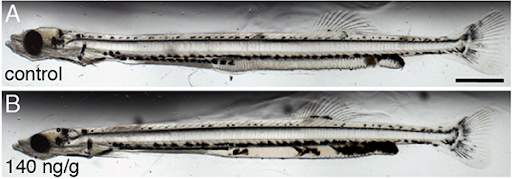
“Low-level embryonic crude oil exposure disrupts ventricular ballooning and subsequent trabeculation in Pacific herring” examines the mechanisms behind how low-levels of oil exposure impact the development of embryonic Pacific herring.
Researchers studied the mechanisms behind heart, or cardiovascular, development issues in Pacific herring that were exposed to low-doses of oil during embryonic development. They found that oil exposure leads to specific developmental changes, driven by dysregulation of calcium cycling between cells, which are precursors to long-term cardiac problems and overall reduced health. Researchers also identified specific genes whose expression changes in response to oil exposure. This advances our ability to use altered gene expression as a diagnostic marker of oil exposure and injury in fish.
Using Citizen Science to Keep Beaches Clean
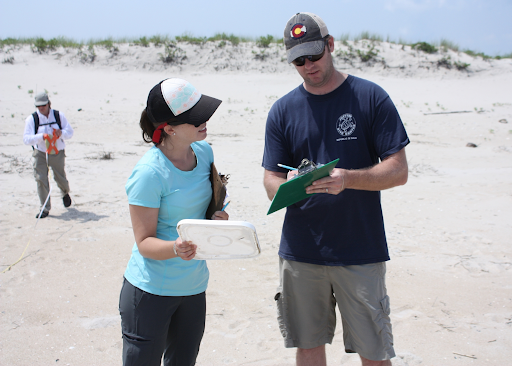
“Temporal Trends and Potential Drivers of Stranded Marine Debris on Beaches Within Two US National Marine Sanctuaries Using Citizen Science Data” used the results of citizen science monitoring surveys of items stranded on shorelines within the Greater Farallones and Olympic Coast National Marine Sanctuaries to estimate marine debris abundance and temporal trends, and identify drivers of debris loads.
Researchers demonstrated that changes in debris counts and composition reflect seasonal patterns of coastal upwelling and downwelling, but longer temporal trends in overall debris loads depend on the sampling window. However, researchers found that the observational data provided by the citizen science monitoring surveys makes it difficult to identify the causes of stranded debris. Researchers also discovered that there is a need to standardize the number of participants and their search pattern for debris in shoreline monitoring efforts. This shoreline marine debris data can be used to evaluate the impact of management decisions and identify new targets for mitigation.

